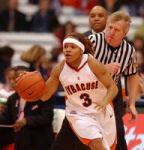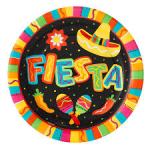Hello Mixed-Up Filers!
I missed you! Hope you’ve all been well since these last few months! As for me, much has happened in my life since my last post. Unfortunately, very little of it good. I know that this site is supposed to be strictly about middle grade books, so I might get fired or suspended for veering off course, but if you just bear with me, I’m going to alter things slightly…just this one time.
You see, a little over a month ago, my father passed away. He’d had cancer for years and deteriorated quickly over the past few months, so it wasn’t like I wasn’t bracing myself for a while, but even when it’s expected, it never makes it any easier. Shortly after that, my grandmother, my dad’s mother passed also. She was in her late 90’s with Alzheimer’s and didn’t know about my dad, so it wasn’t related, but still very freaky with the timing.
Now, needless to say, I have not been in the best of spirits. I try each day and am honestly mostly fine, but there is the occasional overwhelming feeling of grief, where you just don’t know what to do with yourself. So, that got me thinking a little. If I am having such a difficult time now, and I’m an adult, well, relatively speaking, how difficult would this be for kids? Thankfully, I didn’t have to go through this then, because who knows if I would have been strong enough. I mean, I know this happens every day to some kids, where they lose a parent, but how do they cope? How do adults cope even? Because, I have had a very rough time even accepting that it’s real. How does anyone get by this?
Usually, the thing that has always gotten me through any type of despair has been pouring myself into my writing, but for those who know me, you know I write humorous middle grade and it’s a very tough thing to get into a “Let me be funny now” mindset, when you can’t stop thinking about loss. Still, I have to admit, writing does help, because it lets me escape. That focus on writing “funny” helped force me to go to that place.
But, what do you do if you don’t have writing? I know some people read to escape also, and I did that also. I read A Hitch at the Fairmont by Jim Averbeck, and really enjoyed it. It takes place in the 1950’s and is about an eleven-year old boy named Jack Fair, who teams with legendary director, Alfred Hitchcock, to solve a mystery. I picked this book because I love Hitchcock movies and it made me think of my dad, because he loved them too and introduced me to them. My parents took me to see Rear Window as a kid and I was Spellbound (Another Hitchcock movie btw, so yay for me for doing that!). But anyway, combining those factors, A Hitch at the Fairmont, was a fun read and seemed perfect for my current mindset.
As a matter of fact, getting back to reading, I was originally going to make this post about books which dealt with the subject matter of coping with death or loss, but I just thought how utterly depressing for right now. Don’t get me wrong, I think those books are necessary and important for kids, but it just wasn’t what I needed to research right now.
Then, I thought about posting about uplifting books about the human spirit of going on and persevering in dark times. Triumphing over tragedy, but I figured that would reek of phoniness, since I am nowhere near triumphing over anything.
So, what this is, Mixed-Up Filers, is a question post really. How do all of you cope? What things do you do to get by in those times? Do you have favorite books to read? If so, what are they? Do you write? Anything?
I am very curious, because I have wondered a lot about kids in that situation. And don’t be shy. Even though, I didn’t want to write about good books which focused on dealing with death or sadness, doesn’t mean I wasn’t thinking about what some good books might be for that topic.
So, let me hear from you Mixed-Up Filers! And next time, I promise to be back in a totally middle-grade mood!







 ventures of the Family Fletcher
ventures of the Family Fletcher








